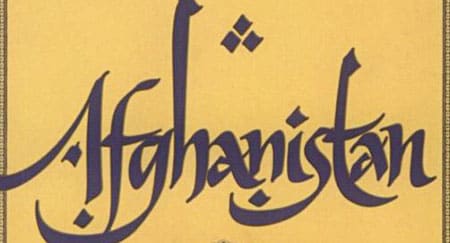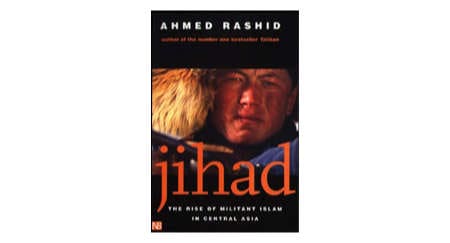Osman Yavuzalp reviews two of the best recent books to appear on Afghanistan and Central Asia.
Before 11 September 2001, Afghanistan was for most Westerners a far-away country about which we knew little. The brutality of the Taliban regime and the safe haven that it provided to al Qaida primarily affected surrounding and nearby countries. That changed as a result of the terrorist attacks against New York and Washington DC of that fateful day. As the United States launched a military campaign to oust the Taliban and destroy al Qaida's terrorist training centres in Afghanistan, the country was propelled for several months to the very top of the international agenda.
The welcome demise of the Taliban brought with it a formidable challenge for the international community: Afghanistan's reconstruction. This requires, among other things, the building of a viable state structure, the extension of central authority throughout the country and the development of a constitution providing safeguards for human rights and religious tolerance. Since August 2003, NATO has been directly involved in this endeavour, leading the International Security Assistance Force (ISAF), the UN-mandated peacekeeping mission responsible for providing security in and around Kabul, the Afghan capital.
Although mainstream media have increased coverage of Afghanistan and its Central Asian neighbours in the past two years, the history, traditions, culture and politics of the region are still little known in the West. Given the prospect of long-term NATO involvement, anyone with an interest in the Alliance and security matters will likely find that time invested in reading on that part of the world today will pay dividends in the years to come. Both Afghanistan: A Short History of Its People and Politics (HarperCollins Publishers, 2002) by Sir Martin Ewans and Ahmed Rashid's Jihad: The Rise of Militant Islam in Central Asia (Yale University Press, 2002) would probably make welcome though sobering additions to many stockings this Christmas.
Afghanistan: A Short History of Its People and Politics is a must-read study providing useful insight into the shortcomings of earlier attempts at consolidating Afghanistan's unity and reforming its society and the scale of the challenge that the country and the international community faces today. Sir Martin, a British diplomat and former head of the British Chancery in Kabul, provides a detailed chronicle of Afghanistan's history from the emergence of the Afghan Kingdom in the 18th century to the fall of the Taliban. And he concludes that: "If there has been an overriding feature of Afghan history, it is that it has been a history of conflict - of invasions, battles and sieges, of vendettas, assassinations and massacres, of tribal feuding, dynastic strife and civil war."
Today, close to 6,000 NATO-led soldiers are deployed in ISAF. Moreover, NATO is currently seeking to increase its presence in Afghanistan and expand the mission to help build stability in more of the country. As a result, arguably for the first time in their history, Afghans have genuine cause to hope for a better future and, with international support, the opportunity to turn the tide of history. Nevertheless, the international community should not lose sight of why previous reform efforts in Afghanistan have failed.
One of the most fascinating chapters in Sir Martin's book covers Afghanistan's earlier drive for modernisation, which took place during the ten-year reign of Amanullah Khan. Crowned on 27 February 1919, Amanullah was the first Afghan leader to seek to transform the country. In the process, he oversaw the drafting of a constitution for the first time in Afghan history. Amanullah's constitution was based on that of Turkey, where Kemal Ataturk had successfully set up a secular state. In Afghanistan, Amanullah sought to create a similar secular framework within which the monarchy and the government could operate and to define the relationship between religion and the state.
Amanullah also attempted to reform the legal system. He did this by creating an independent judiciary, building a network of courts and developing a secular penal code. In addition, he oversaw legislation to improve the rights of women, invested heavily in education and attempted to overhaul and reorganise the tax system. While Amanullah was genuine in his attempts to modernise Afghan society, his reforms inevitably came up against deep vested interests and eventually led to tribal uprisings. In response, he was forced to abdicate in January 1929.
Amanullah may simply have been ahead of his time and his reform programme too ambitious for Afghanistan early in the 20th century. But his fate and that of his reform programme do not bode well for today's efforts to build a viable Afghan state and draw up a constitution in which all ethnic communities are fairly represented. Indeed, the challenge of balancing the need to modernise, on the one hand, and respect for tradition, on the other, remains formidable.
An assembly of tribal leaders, or Loya Jirga, is meeting in December 2003 to review and agree a constitution. By all accounts, the draft text is moderate yet progressive. It includes guarantees for all faiths to worship and allows political parties to be established as long as their charters "do not contradict the principles of Islam" and that they do not have any military aims or foreign affiliation. Pashtoo and Dari are to be the official languages. Hopefully, it will be possible to find the right balance this time because, if approved and implemented, a new constitution should be a major step in bringing stability to Afghanistan.
Chapters devoted to the rule of Mohammed Daoud Khan also make fascinating reading. Daoud, one of Afghanistan's most dynamic leaders, led the country in the 1950s and early 1960s, and then again between 1973 and 1978. An autocrat, who sought a close relationship with the Soviet Union, Daoud was able to bring tribal leaders in line and to assert central authority over the entire country. He resigned in March 1963 as a result of an unwinnable conflict with Pakistan and growing opposition to his ever-more autocratic rule. He regained power in July 1973, only to be overthrown and killed in 1978.
While Daoud's policies, during both of his periods in power, were highly autocratic, his principal achievement was to have built, for the first time in his country's history, a sufficiently well-trained, well-equipped and mobile Afghan Army to be able to maintain stability throughout the country. The international community is effectively facing the same challenge today. Disarming, demobilising and reintegrating former Mujaheedin into a disciplined and efficient Afghan National Army is one of the prerequisites for successful implementation of the December 2001 Bonn Agreement, the international accord setting out a reconstruction process for Afghanistan, and a sine qua non for a stable country.
Afghanistan is by no means the only country in Central Asia where religious fundamentalism has been on the rise in recent years and should not be viewed in isolation. Socio-economic conditions in its neighbours may provide equally fertile ground for militant Islam to flourish, a point that comes across clearly in Jihad: The Rise of Militant Islam in Central Asia. Ahmed Rashid's latest book is a sequel to Taliban, in which he provided a detailed account of how this movement came to power in Afghanistan and of the brutality with which it ruled the country for five years. In his latest book, Rashid is seeking to draw similar international attention to Central Asia, which he views as the new frontline for militant Islam.
Rashid provides an insightful and comprehensive analysis of how both Islam and the political environment have evolved in Central Asia in recent years, with particular emphasis on the period immediately following independence from the Soviet Union. He argues that the combination of the transitional policies adopted by all Central Asian states and the unleashing of fundamentalism, which had been kept under check during the Soviet era, helped to create a climate of fear and suspicion. And he focuses on how the Hizb Ut-Tahrir and the Islamic Movement of Uzbekistan, two fundamentalist movements, flourished in Central Asia and especially in Uzbekistan in the years following independence from the Soviet Union.
The high point for the Islamic movements in Central Asia was probably 1999. That year, the Kyrgyz Republic, Tajikistan, Uzbekistan and, to a lesser extent, Kazakhstan experienced first hand the dangers posed by Afghanistan's Taliban regime with a series of incursions into the first three countries by terrorists linked to al Qaida. Since then, the Central Asian states have systematically sought to use international forums - including the Euro-Atlantic Partnership Council - to draw the world's attention to the deteriorating situation in Afghanistan. Specifically, they wished to highlight the way in which the country had become a training ground for terrorism, a hotbed of extremism and, by fuelling fundamentalist tendencies, a threat to the security of the entire region.
In view of the tragic Afghan experience under the Taliban, the most poignant message which Rashid's book conveys is the alarming situation of the Ferghana Valley, an impoverished region straddling the Kyrgyz Republic, Tajikistan and Uzbekistan. Here, Rashid highlights a study published by Anthony Lake, former National Security Adviser to US President Bill Clinton, in which the Ferghana Valley is identified as one of the world's three most likely crisis areas of the future. And he urges the West, and in particular the United States, to develop a strategic vision for the region and a framework within which to encourage and assist local regimes in carrying out democratic reforms.
Given the scale of international investment in reconstruction in Afghanistan, the importance of Central Asia cannot be over-emphasised. The region clearly faces significant difficulties, some of which stem from the disintegration of the Soviet Union and the many problems associated with the transition from a command economy and communism to a market economy and democracy. And it clearly requires international assistance to make a successful transition. Hence the importance of many of the Partnership mechanisms that NATO has developed in recent years such as the Partnership Action Plan against Terrorism and Individual Partnership Action Plans, both of which complement the assistance and reform programmes of other international institutions.
As Rashid makes clear, the countries of Central Asia are at a critical crossroads. They can take advantage of the global community's new engagement with the region to rebuild their countries. Or they can look inward and risk a similar fate to that of Afghanistan. Indeed, accelerating the pace of reform remains the only antidote against the perils that Rashid skilfully highlights and which Central Asian states must overcome, not just for their own sakes, but for the stability of a much wider region, including Russia and the West beyond. These may still be far-away countries but we can no longer afford to know little about them.


